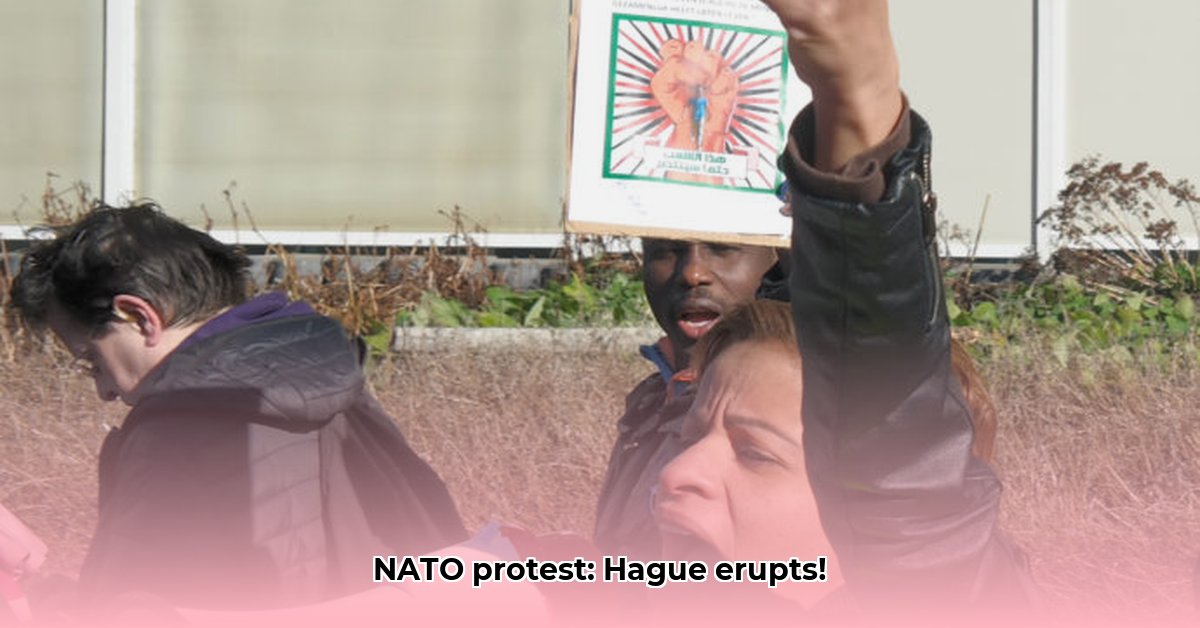
Extinction Rebellion's NATO Summit Protest: A Mixed Bag in The Hague
Extinction Rebellion (XR) staged a series of protests in The Hague during the recent NATO summit, aiming to disrupt proceedings and raise awareness about climate change and Palestine solidarity. Their approach, utilising numerous smaller, decentralized actions instead of one large-scale demonstration, yielded mixed results. While some actions successfully caused significant traffic disruption, highlighting their cause, many protesters were arrested, and the dual focus may have diluted their overall message.
The protests saw XR activists attempting to block major thoroughfares, notably the A12 highway, causing significant traffic congestion. This tactic, while garnering media attention, also led to a swift and decisive police response resulting in numerous arrests. A key question remains: did the multifaceted nature of the protest – encompassing both climate and Palestine concerns – enhance or hinder its impact?
A Tactical Analysis: Swarm Tactics and Police Response
XR's strategy of deploying numerous smaller protests, a "swarm" approach, aimed to overwhelm police resources. While this tactic did stretch police capabilities, it also allowed authorities to deal with individual groups more easily, leading to a high number of arrests. Professor Johan de Vries, a political science expert at Leiden University, commented, "XR's decentralized approach presented both opportunities and challenges. The increased visibility was a success, but the fragmented nature made maintaining a unified message difficult." This highlights the inherent tension between maximizing visibility and maintaining coordinated action. Did the multiple points of contention dilute the climate change focus? It's a critical point to consider.
The police response was rapid and substantial. While precise numbers of arrests are still being collated, reports suggest a significant number of XR activists were detained. The use of force during arrests is currently under review. The speed and efficiency of the police response raise questions about the balance between maintaining public order and protecting the right to protest. How such incidents are handled, and whether the response was proportionate, will be subject to intense scrutiny in the coming weeks.
Key Outcomes of the Hague Protests:
- Partial Success: Significant disruption to traffic flow, particularly the A12 highway blockade, raised awareness of XR's concerns.
- Significant Arrests: The police effectively countered the decentralized approach, leading to a substantial number of arrests.
- Message Dilution?: The dual focus on climate change and Palestine solidarity may have diluted the overall message, potentially hindering impact.
How effective was this dual approach? Did it expand the protest's reach or cause it to lose focus?
Public Opinion and Future Protests
Public reaction to the protests has been varied. While some praised XR’s efforts to highlight pressing issues, others criticised the disruption caused. The long-term political impact remains to be seen. However, the protests have undoubtedly sparked a significant public debate surrounding climate change and activism in the Netherlands. The extensive media coverage, however frustrating for commuters, did elevate the visibility of their cause.
This begs the question: Did the disruption outweigh the increase in awareness?
The Road Ahead for XR:
XR will undoubtedly review their tactics following the Hague protests. The experience highlights the need for a balanced approach – one that maximises visibility while minimising disruption and maintaining a clear message. Future protests will likely see a refinement of their strategies to address the challenges they faced. What will the changes look like? Will there be a renewed focus on a single issue? Or will they try a different approach altogether? This remains crucial to their growth and future activism.
The NATO Summit protests in The Hague served as a vital case study in modern-day activism, showcasing both the strengths and weaknesses of decentralized protest strategies. The ongoing debate around their tactics will likely continue to shape future climate activism in the Netherlands. The events serve as a valuable lesson for both XR and other activist groups. The question remains: what strategies will prove most effective in balancing impactful action with minimising disruption?